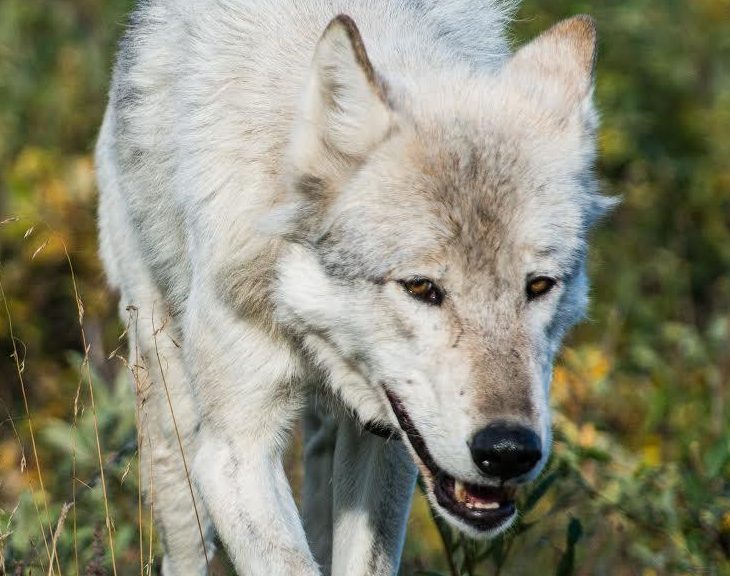
(Photo by Kent Miller, Denali National Park)
Proposals to reinstate a no wolf kill area on state land along Denali National Park’s northeast edge, will be considered by the Alaska Board of Game. The board imposed a moratorium on the controversial buffer zone proposals when it eliminated a previous one in 2010, but the issue returns to the board agenda during a week-long meeting in Fairbanks that began Friday (Feb. 17).
One of two Denali wolf buffer proposals comes from the Denali Citizens Council.
“We’re trying to reduce the risk on these wolves so that they can be viewed within the park and on state lands nearby by the hundreds of thousands of tourists that come through there every year,” Denali Citizen’s Council board member Nancy Bale said.
Bale said her group’s proposal would ban wolf harvest year round on a stretch of state land west of Healy, an area where park wolves often roam, and a few are killed by hunters and trappers annually. A recent study shows Park visitors were twice as likely to see wolves between 2000 and 2010, when there was a buffer. Denali National Park has also submitted a proposal to reinstate a buffer. Park science and resource manager Dave Schirokauer said it would cover fewer acres than the DCC proposal, and be in place seven months of the year, during wolf breeding, birthing and pup raising season.
“We view this kind of as a way to let the state meet some of its objectives for providing trapping opportunities, while conserving wolves during the time period that they’re most vulnerable to disruption,” Schirokauer said.
Ted Spraker is Alaska Board of Game chair.
“Basically the question is still the same,” Spraker said. “Whether we wanna close off about 152 square miles of state land and basically add it to the National Park Service system
Spraker underscored that the game board is primarily about setting hunting seasons to provide for sustained yield, and he’s not convinced that the minimal harvest of Denali wolves in the proposed buffer area is significant, given the depressed status of area wolves.
“Kind of an all-time low, so there’s something than just a few wolves being taken going on,” Spraker said.
Buffer supporters point to hunting and trapping losses of single wolves that have lead to the demise or dispersal of once popularly viewed Denali Park entrance area wolf packs. Longtime wildlife advocate and biologist Rick Steiner sees protection of park wolves as a simple win, given the popularity of Denali wolf viewing.
“Visitors that contribute over half a billion dollars to our economy, so it’s in the state’s interest to do this,” Steiner said. But politically it’s been a nightmare.”
Steiner is not optimistic that the Game Board will approve a new Denali wolf buffer, and maintains a state-federal land swap is a better alternative, and Spraker agrees.
“Some sort of equitable land trade or some sort of hunting opportunity in another part of the state,” Spraker said. “Haven’t you realized back in 1980 when all the parks and monuments were created, we lost about a quarter of all the sheep hunting. If the state could get some of that back they’d probably be willing to trade some of this land, create some sort of a buffer and work with the National Park Service.”
A land swap has long been discussed with no action, and with the Game Board meeting in Fairbanks, the focus is on buffer zone proposals. The group Alaskans for Wildlife organized a protest outside the Pikes Landing meeting location Friday. Group volunteer coordinator and retired wildlife biologist Fran Mauer of Fairbanks said one of their primary concerns is what he describes as the groups insular nature.
“Consists only of hunters, hunting guides and trappers,” Mauer said. “There’s no representation on the Board for wildlife viewing, photography, wilderness guiding, tourism.”
Mauer said the group is advocating for the Denali Citizen’s Council proposal for a larger, year round, no wolf kill Denali buffer zone.
Dan Bross is a reporter at KUAC in Fairbanks.




